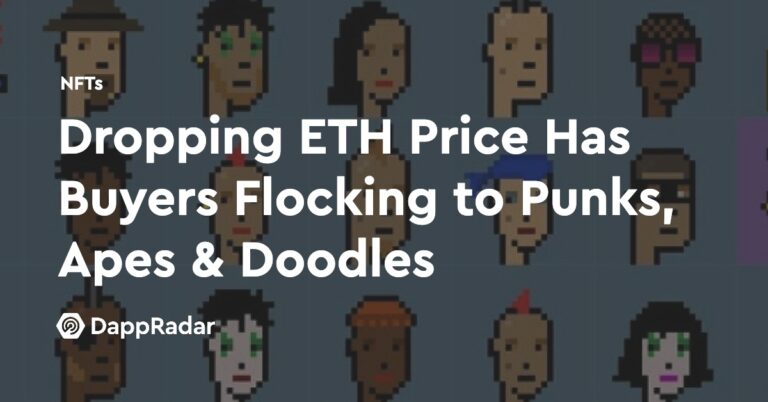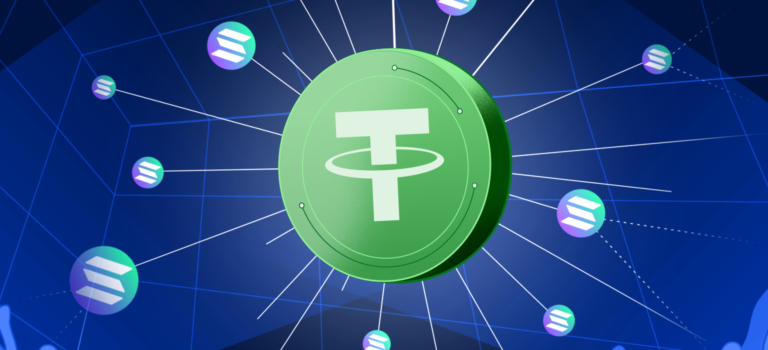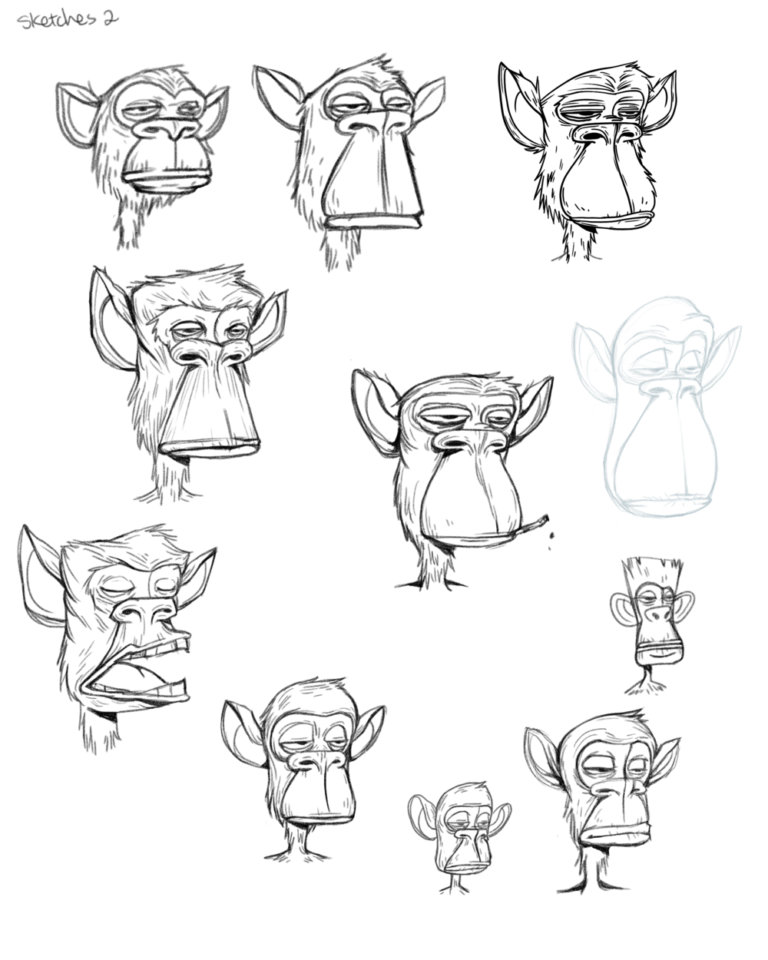Key Insights
- Metaplex is Solana’s decentralized NFT infrastructure and standard, powering the rapid rise in Solana-based NFTs through applications frameworks that lower technical barriers.
- The success of the protocol is underscored by the impressive $3.2 billion in sales volume powered by the Protocol’s programs and applications within the 12 months since launching.
- By developing free tools and NFT standards, Metaplex’s “Shopify” approach empowers creators to bypass costly middlemen and form intimate relationships between their brand and the community.
- Metaplex’s rapid adoption has been bolstered by the relative speed and affordability of transacting on-chain compared to leading alternative NFT platforms and ecosystems.
- The protocol emphasizes decentralization as a core principle through free and open-source tools, fully on-chain smart contracts, and native Arweave integration for metadata storage.
Introduction
Solana (NFT) Summer of ’22
In the still-nascent NFT space, the pace of development and adoption varies from one Layer-1 (L1) ecosystem to the next. Ethereum, home to notable “OG” projects such as CryptoKitties, CryptoPunks, and BAYC, has led the way in popularizing NFTs. However, the pace of NFT deployment on other chains is speeding up.
Solana is one such L1 that stands out as a top contender in the race to produce the most vibrant NFT community. Its competitiveness as an alternative is marked by the outsized growth in NFT user activity in 2022 — a continuation of the trend that began in 2021.
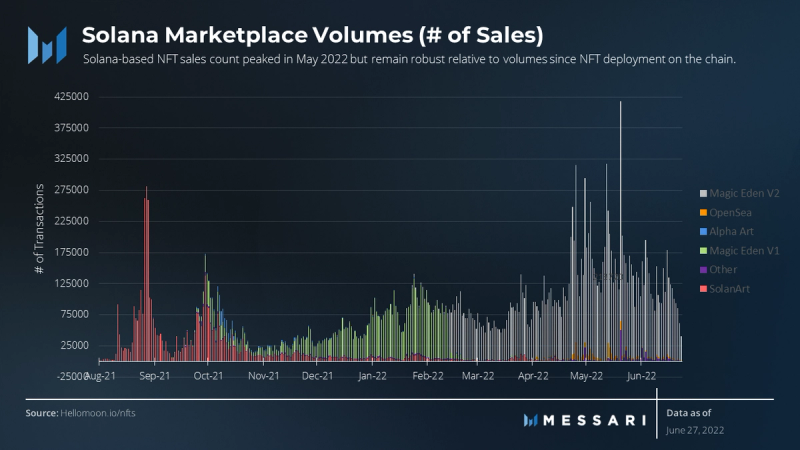
The increasingly robust NFT ecosystem on Solana is due to a number of factors such as the impressive speed and inexpensive transaction costs. When compared to other L1s, there is one key differentiating factor that is undeniably a major driving force in Solana’s ascension as a go-to chain for NFT creators and developers: The Metaplex Protocol.
Protocol Overview
Metaplex: The “Shopify Experience” Meets Web3
Since its launch in June 2021, Metaplex has created a suitable framework and environment in which NFTs could flourish on Solana. Stewarded by the Metaplex Foundation, the protocol’s mission is to create the “World’s NFT Protocol” by providing NFT communities with development tools and open standards for digital asset issuance and ownership on-chain. The protocol consists of four smart contracts that make up “contract ecosystem”, namely: Token Metadata (attaches metadata to an nft), Token Vault (escrow to secure tokens in a “safety deposit box”), Auction (tracks participant activity and collects money from auction winners), and Metaplex (disburses NFTs to auction winners and handles all royalty payments). These smart contracts interact with one another and represent on-chain primitives that are used to carry out the various protocol features and functions.
The Protocol’s roots stem from an internal Solana Labs initiative in May 2021 primarily led by two developers, Bartosz Lipinski and Jordan Prince. As interest among the crypto community began to swell, driving a flurry of activity primarily on Ethereum, Solana developers were determined to bring NFT compatibility to Solana. The devs recognized that the Metaplex NFT spec could deliver a more streamlined experience for users and creators over what was available on Ethereum, given the greater speeds and affordability of transacting on Solana.
Within weeks, the initiative produced a minimum viable product showcasing the ability to mint basic 1-of-1 NFTs. As the popularity of NFTs accelerated, so too did the demand for minting solutions and advanced functionalities on Solana. This led to the spin-off of the Solana Labs initiative to form the Metaplex Protocol, an institution dedicated to supporting the Solana NFT ecosystem. Since the launch, nearly every NFT minted on Solana has been an NFT powered by Metaplex.
Protocol Features
Metaplex is best known for having two core components: an on-chain minting program and a self-hosted front-end Web3 application. Over the past ~12 months, the Metaplex team has expanded its program offerings and features to widen creator functionalities and lower entry barriers. Metaplex’s tools target developers and creators with moderate technical skills, aiming to reduce the knowledge gap over time.
Candy Machine v2
One of the fundamental programs that put Metaplex “on the map” is Candy Machine. It remains a critical piece of infrastructure for devs building within Solana’s NFT ecosystem. This plug-and-play, mass-minting solution was initially “hacked” together in an effort to salvage a mint (gone awry) of what’s now considered to be one of the most valuable Solana-based NFT collections: Degen Ape Academy.
Candy Machine v1 made its formal debut in late-August 2021 as a fully on-chain program used in the minting of another Solana “blue chip”, Aurory. In December 2021, the Metaplex team released an updated program, Candy Machine v2. Through this release, several improvements were made: bot protections, whitelist configurations, greater collection size flexibility, and hide/reveal optionality for creators.
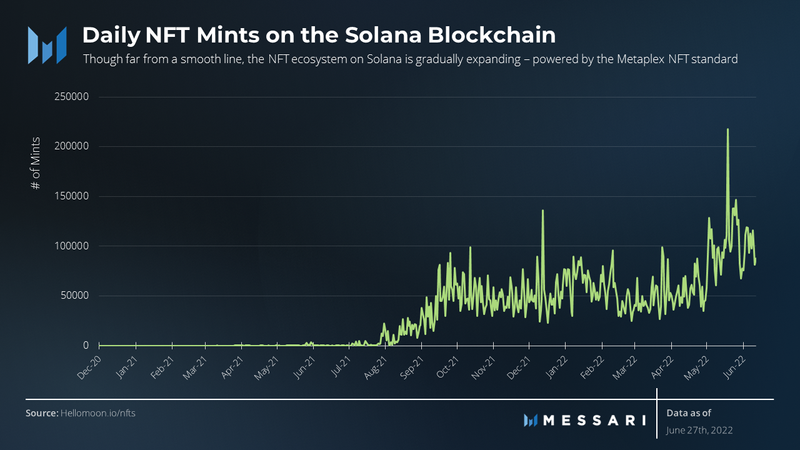
Metaplex Web App & User Interface
Another core component of the Metaplex Protocol is its customizable “storefront” interface. It’s a Web3 application that looks and operates like Shopify or WordPress. The Metaplex team deliberately designed the application to mimic Web2 storefronts, enhancing the approachability from the standpoint of both launching and purchasing NFTs. As with traditional ecommerce platforms, storefront owners can select from various parameters such as auction type (four choices, all derived from the traditional English auction) and pricing method (fixed versus dynamic pricing, inclusion of a non-refundable bot tax, etc).
The focus on branded storefronts also promotes closer ties between creators and their communities. Through personalization, the mint can be tailored to the target audience — should the purchase resemble an experiential journeyor just a quick sale? Will this be a permanent landing page or just a single-use auction hub? These choices are left to the creators to determine what is best suited for the community.
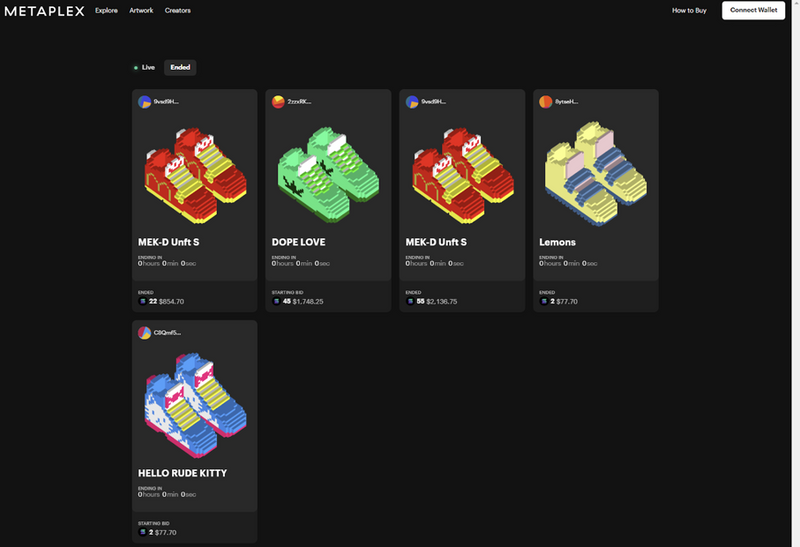
Quite possibly the most impactful and Web3-aligned aspect of the self-hosted storefront approach is the bypassing of middlemen (aka fee-collecting “rent seekers”) during the NFT sales process. Typically, third-party NFT marketplaces and aggregators are needed to facilitate most secondary sales as well as some primary sales, which come with associated fees. Metaplex’s storefront approach sidesteps “gatekeepers” by allowing developers to enable both primary and secondary sales through their own site (if they so choose).
Similar to other Web3-aligned sites, the storefront feature does contain an off-chain component — the web-hosting service used for the website. Additionally, the Metaplex team plans to decompose the storefront interface into a set of more granular pieces that aim to meet the needs of its expanding user base. These future pieces may include “no code” solutions for creators, reference UI implementations, and SDKs for devs.
Auction House
Rolled out in November 2021, “Auction House” is one of Metaplex’s latest full-featured programs that’s already experienced widespread adoption amongst some of the largest marketplaces, such as Opensea. The Auction House is an escrow-less listing system enabled through a fully on-chain, open-source smart contract.
The program performs the core function of a secondary marketplace by facilitating the bid, sale, and transfer of an NFT between parties through a decentralized smart contract. Notably, the transfer of funds, the NFT, and the auction fee occur at the point of sale execution. The program thus promotes a more trustless exchange by avoiding a centralized smart contract vault.
When paired with a front-end interface, Auction House empowers any NFT community to launch their own marketplace with parameters optimized to align with their individual goals. Two such parameters are seller fee percentage and choice of accepted SPL tokens.
Metadata Standards

Source: Metaplex Docs – Token Metadata
The underlying NFT metadata (such as mutability, creator, embedded royalties, etc.) is what makes it a useful digital asset — e.g., what separates an Ape NFT from an Ape JPEG. In other words, you can’t “right-click, save as” an NFT’s metadata on Twitter — much to the chagrin of all the haters.
The dev team has continuously improved and expanded upon Metaplex’s metadata standards. This comes in many forms such as:
- Defining various token standards: an attribute that determines fungibility (NonFungible, NonFungibleEdition, FungibleAsset, or Fungible)
- Metaplex Certified Collection Standard: standardizing the way in which NFTs are linked together on-chain to form identifiable collections (often used by third-party marketplaces)
- Adding an optional “Uses” field, primarily for gaming applications, that can designate an NFT as having a finite “life.” The NFT is burned once the designated number of “uses” has occurred.
Additionally, Metaplex’s Candy Machine program natively utilizes the Arweave decentralized storage protocol. Creators can store metadata for a small one-time fee per collection, and the data is later referenced automatically during the minting process.
Traction

Within 12 months of launching, Metaplex has powered approximately $3.2 billion in NFT sales through its various programs, with $926 million attributable to primary sales made through Candy Machine. Over the course of this period, the protocol’s metadata standards such as the Metaplex Certified Collection Standard have been adopted by some of the largest third-party NFT marketplaces, namely OpenSea, MagicEden, and Solanart, amongst others.
All the while, Metaplex’s work to lower the barriers to building NFT communities on Solana has borne fruit in the form of a vibrant ecosystem with community-driven tools that further Metaplex’s mission. One of these tools is a decentralized platform named Holaplex. The Holaplex NFT Marketplace Standard enables creators to launch a branded, feature-complete marketplace with no coding required. This is possible using Metaplex’s open-source Auction House architecture, upon which the Holaplex standard is built.
And finally, as Metaplex’s influence in the space has grown, so have its partner integrations. A key integration with Strata Protocol’s Dynamic Pricing Mint tool was announced on Metaplex’s blog in June 2022. With this tool, mints function like a real-time Dutch auction — the price increases and decreases based on demand. The rationale behind this feature is that unpredictable pricing dynamics may make mints less easily exploitable and adequately disincentivize bots. This integration adds to the novel approaches taken by Metaplex to discourage bots. Notably, these anti-bot measures come after the Solana network experienced forced downtime attributed to heavy botting on a highly-anticipated mint using the Candy Machine program – in and of itself an example of the impressive traction (and growing pains) that the Protocol has experienced. The Protocol imposed a botting penalty in April 2022.
Competition & Risks
Since its start as a Solana Labs initiative focused on NFTs, Metaplex has become the de facto body presiding over Solana’s NFT ecosystem. Metaplex has positioned itself closer to a “public good” than to a profit-seeking enterprise. Given that the Metaplex team encourages builders to leverage and improve upon its open-source applications, the protocol currently faces no direct competition within the Solana blockchain.
Unlike other protocols, the Metaplex team has chosen not to embed commission fees into its current suite of smart contracts and applications, thus leaving no revenue to accrue back to the protocol at this stage of its deployment. To date, Metaplex has been funded through the Metaplex Foundation, which raised $46 million dollars through a private “token round” in January 2022. Despite the current financial support, the lack of a reliable source of revenue accrual exposes Metaplex to an inherent risk in “public goods funding” — the flow of funds are outside of its immediate control. However, the decision to impose fees or a token gating mechanism is up to the owners of the protocol. Thus the choice to monetize can be made at some point in the future once widespread, lasting adoption is secured.
Additionally, the following statement can be found in the Metaplex docs: “Beyond Solana, the future is multichain and we’re very mindful of this as we make architecture decisions.” Though somewhat vague, this likely hints at future plans for Metaplex to expand to other blockchains or at least develop some form of interoperability framework. Interactions with other chains may bring increased competition for Metaplex from the NFT protocols native to those chains.
Wen Token?
A formal announcement of a token airdrop does not appear in any documentation. However, the issuance of a token may be in the cards given the “private token round” designation attached to a $46 million capital raise (referenced above). Additionally, a potential decision to form a DAO would align with the protocol’s values on decentralization. Put simply, early active collaborators and community members may be rewarded with partial ownership in the protocol in the future. That’s the promise of Web3, after all!
Closing Summary
Metaplex became a household name within the Solana NFT ecosystem. The magnitude of its impact, especially early on, is well-illustrated by the many Solana “blue-chip” NFTs sharing similar origin stories through Candy Machine. Whether it be launching virtual storefronts, powering complex mints, or facilitating trustless secondary sales, Metaplex offers a diverse set of solutions for a rapidly expanding crypto vertical. Moreover, Metaplex continues to push out innovative solutions, labeled “experimental” products, which are in various stages of testing. All the while, the metadata standards developed by Metaplex continue to improve the user experience when interacting with the NFTs across wallets and applications.
Furthermore, Metaplex is fully adhered to the Web3 ethos of decentralization. It has stayed committed to developing open-source, fully on-chain, and commission-free programs in the hopes of making Solana the most hospitable blockchain available to NFT communities. And based on the recent “token round”, it appears there may be an opportunity to decentralize even further via distribution of ownership to the community — it’s hard to imagine a better path for Solana’s decentralized NFT infrastructure to take.
Looking to dive deeper? Subscribe to Messari Pro. Messari Pro memberships provide access to daily crypto news and insights, exclusive long-form daily research, advanced screener, charting & watchlist features, and access to curated sets of charts and metrics. Learn more at messari.io/pro
This report was commissioned by Metaplex, a member of Protocol Services. All content was produced independently by the author(s) and does not necessarily reflect the opinions of Messari, Inc. or the organization that requested the report. Paid membership in Protocol Services does not influence editorial decisions or content. Author(s) may hold cryptocurrencies named in this report.
Crypto projects can commission independent research through Protocol Services. For more details or to join the program, contact ps@messari.io.
This report is meant for informational purposes only. It is not meant to serve as investment advice. You should conduct your own research, and consult an independent financial, tax, or legal advisor before making any investment decisions. The past performance of any asset is not indicative of future results. Please see our terms of use for more information.

